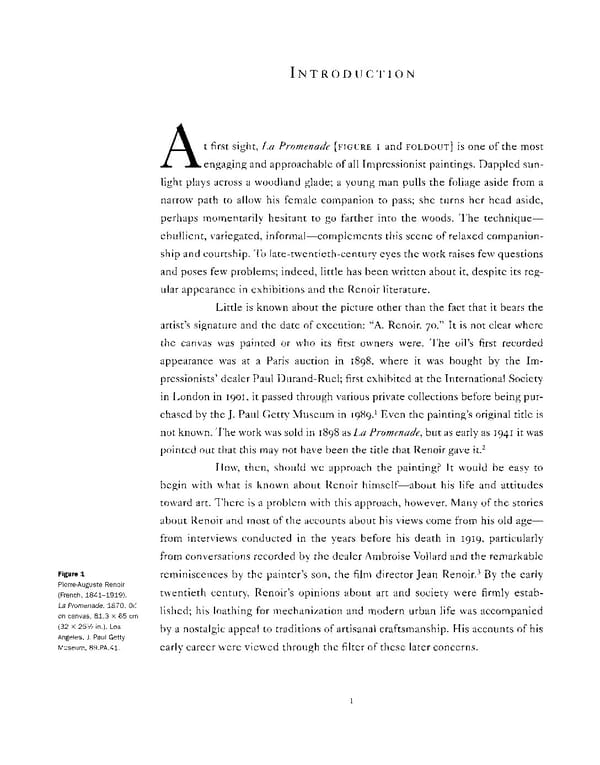INTRODUCTION At first sight, La Promenade [FIGURE i and FOLDOUT] is one of the most engaging and approachable of all Impressionist paintings. Dappled sun- light plays across a woodland glade; a young man pulls the foliage aside from a narrow path to allow his female companion to pass; she turns her head aside, perhaps momentarily hesitant to go farther into the woods. The technique— ebullient, variegated, informal—complements this scene of relaxed companion- ship and courtship. To late-twentieth-century eyes the work raises few questions and poses few problems; indeed, little has been written about it, despite its reg- ular appearance in exhibitions and the Renoir literature. Little is known about the picture other than the fact that it bears the artist's signature and the date of execution: "A. Renoir. 70." It is not clear where the canvas was painted or who its first owners were. The oil's first recorded appearance was at a Paris auction in 1898, where it was bought by the Im- pressionists' dealer Paul Durand-Ruel; first exhibited at the International Society in London in 1901, it passed through various private collections before being pur- chased by the J. Paul Getty Museum in 1989.* Even the painting's original title is not known. The work was sold in 1898 as La Promenade, but as early as 1941 it was pointed out that this may not have been the title that Renoir gave it.2 How, then, should we approach the painting? It would be easy to begin with what is known about Renoir himself—about his life and attitudes toward art. There is a problem with this approach, however. Many of the stories about Renoir and most of the accounts about his views come from his old age— from interviews conducted in the years before his death in 1919, particularly from conversations recorded by the dealer Ambroise Vollard and the remarkable Figure 1 reminiscences by the painter's son, the film director Jean Renoir.3 By the early Pierre-Auguste Renoir twentieth century, Renoir's opinions about art and society were firmly estab- (French, 1841-1919). La Promenade, 1870. Oil lished; his loathing for mechanization and modern urban life was accompanied on canvas, 81.3 x 65 cm (32 x 25V2 in.). Los by a nostalgic appeal to traditions of artisanal craftsmanship. His accounts of his Angeles, J. Paul Getty Museum, 89.PA.41. early career were viewed through the filter of these later concerns. i
 Pierre-Auguste Renoir: La Promenade Page 8 Page 10
Pierre-Auguste Renoir: La Promenade Page 8 Page 10